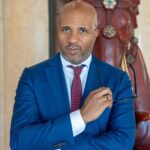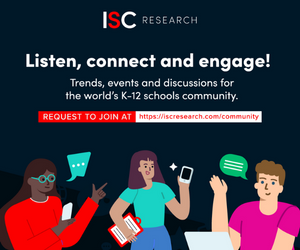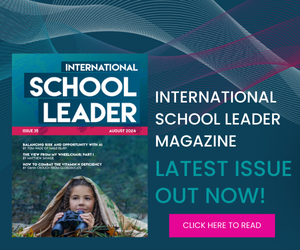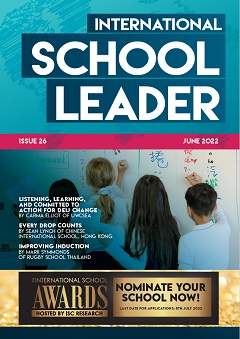By Dr Derrick Gay
Diversity is a fact. Belonging is a choice.
In the wake of the global awareness prompted by George Floyd’s murder in 2020, leaders have become aware of longstanding discrimination and harm in international schools. This heightened consciousness has fuelled more intentional efforts to foster inclusive and safe international schools.
Notwithstanding, implementing Diversity efforts is increasingly complex as society becomes more politically polarized. From the display of rainbow flags (solidarity to some and political indoctrination to others) to student usage of racist and religious “jokes” and slurs, and heated parent WhatsApp groups to accusations of indoctrination via curriculum and library books, stakes are high for educators committed to fostering cultures of dignity and respect. We are all too familiar with the cautionary tales of leaders who have “explored new opportunities” following Diversity-related controversies at their schools.
While my practitioner research over the past 25 years leading efforts in more than 30 countries has identified numerous obstacles to realizing Diversity objectives that extend beyond the scope of this article, I posit that the fundamental challenge is the word “Diversity” itself, which I argue in my Double-Edged Sword TEDx Talk.
More specifically, international schools communicate, and constituents perceive conflicting understandings of Diversity, most often equating Diversity with “different” instead of differences, in ways that not all members feel included by or perceive themselves as benefactors of Diversity efforts. As a result, key individuals opt out of these critical efforts, or work is deprioritized, creating a paradoxical space where the onus to solve issues of discrimination and harm is placed on the most marginalized individuals in schools. In this article, I will offer strategies to reframe Diversity efforts to foster deeper belonging for all community members.
“We are already diverse.”
In 2015, I delivered a keynote exploring Diversity at the AAIE 50th Anniversary Leadership Conference . While the international school leaders in attendance found the topic intellectually stimulating, it was clear that the majority did not find the issues relevant. Many international school communities mistakenly conflate the presence of multiple passport holders, nationalities, languages, and cultures (diversity) as confirmation of an inclusive community (belonging). This misconception often manifests in the requisite “food, fun, flag, and festival” events, where schools showcase flags and sample international cuisines to the absence of intentional efforts to bridge differences, deepen empathy, and cultivate inclusive perspectives, attitudes, behaviours, practices, and policies.
However, research conclusively finds that international communities require additional intentionality and strategic efforts to reconcile divergent cultural norms, worldviews, and experiences to truly foster an inclusive environment.
International school communities overwhelmingly equate Diversity exclusively with LGBTQ+ and United States indoctrination.
The contemporary concept of Diversity originated in the United States during the1960s civil rights movement for racial justice and expanded to include gender equality and LGBTQ+ rights. In 2024, the term continues to evolve to foster deeper inclusion and belonging for individuals from a wide range of backgrounds.
Outside of the United States, Diversity was introduced decades after the US civil rights movement, often in conjunction with efforts to advance LGBTQ+ rights, coupled with rainbows at advocacy events, such as Pride Parades or Pride Games. This historical context helps to better understand the genesis of the perception that Diversity efforts focus solely on supporting the LGBTQ+ community, to the exclusion of other individuals and groups who also experience discrimination due to religion, ethnicity/race, socioeconomics, learning differences, physical disabilities, etc.
This perception is further complicated by the fact that individuals leading Diversity efforts in international schools are often from the United States, reinforcing the notion that these efforts represent an imposition of US values and beliefs primarily aimed at exclusively supporting the LGBTQ+ community.
Strategies to Redefine Diversity to Drive Belonging
To cultivate an authentically inclusive learning environment, international schools must acknowledge and address the limitations of current Diversity models. The first step is to define terms and then align efforts with the school’s mission to foster a culture of dignity (equal inherent value of ALL individuals regardless of background) and respect (individual or institutional behaviours that acknowledge dignity), such that all students flourish.
- Define Diversity in Inclusive Ways and Align with Mission Without clear definitions, constituents may interpret Diversity in narrow ways, such as focusing solely on LGBTQ+ issues; referencing racial categories from the United States that may not resonate in the school’s country (e.g., conflating multiple nationalities and ethnic groups as “Asians” in Malaysia, counting “Latinx” in Argentina, or assuming shared history of “Blacks” in Senegal); or viewing Diversity efforts as an ideological imposition from the United States.
Strategy: Define diversity in a way that includes everyone and all groups, recognizing both individual uniqueness and shared human characteristics that unite individuals across differences. This definition process should be collaborative and involve all constituents, as individuals are more invested in structures they help create. Align efforts with the school’s mission to provide an inclusive environment where all students and community members flourish. Therefore, if anyone from any group experiences discrimination or harm, the school is compelled to act, being mindful that not all harm is related to an individual’s identity.
- Ground Efforts in Belonging While Diversity represents the unique composition of a community, belonging reflects the personal emotional outcome when individuals feel valued, respected, and seen as equals. Indeed, benefits attributed to Diversity are often proxies for belonging, psychological safety, and/or overall well-being. It is widely accepted by most constituents that ALL students have a right to belonging and the opportunity to flourish. Some argue that focusing on Belonging dilutes the work or merely appeases those who have objections to these efforts. However, the focus on Belonging provides a greater likelihood of strategically sustaining efforts, mitigating politicization of the work, reducing ideological echo chambers on many sides, and providing a compelling motivation to prevent and address harm while intentionally promoting well-being.
Strategy: Anchor your efforts in Belonging, as articulated by your school’s mission, your commitment to child protection and individual flourishing. In this context, Belonging becomes apolitical and not an opinion or agenda. Instead, these efforts become a fundamental tenet of your school’s educational value proposition.
Conclusion
International schools intentionally curate communities of individuals from different backgrounds to learn and grow from each other’s perspectives, viewpoints, and experiences. As such, international schools are uniquely positioned to drive educational innovation, engage in deeper learning, and model inclusive schools for the world.
However, international schools must move beyond superficial markers of Diversity, such as passport counts or cultural festivals, towards a deeper, more intentional approach that acknowledges and bridges differences and deepens empathy to inform inclusive behaviours, curricula, practices, and policies.
Reframing Diversity strategically positions these efforts as an integral part of the school’s commitment to fostering a culture of dignity and respect for all. This strategic redefinition and commitment to belonging will enable international schools to navigate the complexities of discrimination and harm more effectively to create truly inclusive communities where all students can thrive.

Dr. Derrick Gay is a globally recognized Belonging and Intercultural Strategist with more than 25 years experience leading efforts in the international schools sector. You can connect with him on his website or on LinkedIn.




